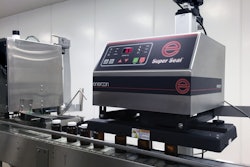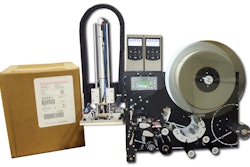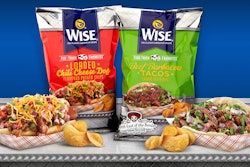The grocery store industry and the universe of Consumer Packaged Goods companies are as interdependent as two industries can be. Packaging made possible the evolution from the clerk-attended general store to the self-service grocery store. Returning the favor, grocery stores, with their ever-expanding square footage, support a proliferating assortment of packaged goods. Interdependence between the two notwithstanding, individual profit objectives can and do conflict.
Even before becoming the supply chain powerbroker, the grocery store industry always has been recognized as the arena in which CPGs battle for their lives. That’s why the latter is concerned with such notions as the-moment-of-truth, point-of-purchase, and shelf-impact.
That’s also why there are packaging-related research methodologies devoted to consumer buying behavior. For example, consumers may be shown photos of a product surrounded by competitive product on grocery store shelves, followed by questions meant to solicit attitudes and opinions. Another example is the miniature grocery store: a room mocked-up to resemble the section of interest. Respondents choose a product for free but are asked to explain why they chose as they did.
Grocery store management, in researching consumer buying behavior, does not have to rely on simulation and mock-ups. Management can rely on direct observation, in addition to the treasure trove of data captured by check-out scanners. Management also stays current on pertinent theories from psychology and sociology, among other disciplines. The preceding internal and external inputs combine for a formidable amount of knowledge.
That knowledge is physically embodied in grocery store layouts. It’s not by accident that neighborhood stores, midlevel chains, and mega-retailers have aspects in common regarding store layout. For CPGs, store layout holds challenges and opportunities.
Come on in
Upon entering, shoppers see the produce section, the unspoken themes being freshness and healthfulness──favorably positioning the store while whetting appetites. The first-impression importance of the produce section is why stores continue to implement upgrades. At the time of this writing, for example, Walmart is expanding its offerings of organic produce and implementing ways to display all produce for better appeal.
The produce sections don’t have to go it alone. Often there are adjacent bakery sections that allow shoppers to see items being pulled from the ovens, the aromas working their magic. The industry, aware of consumer advocate advice, “Never go shopping while hungry, because you’ll likely buy more than intended,” nonetheless believes that even a shopper having just left an all-you-can-eat buffet is susceptible, given the right enticement.
The majority of the items seen upon entering a store are not packaged or are packaged minimally, in keeping with the aforementioned themes of freshness and wholesomeness. On the other hand, processed packaged foods are regarded widely as being loaded with preservatives, salt, fats, and sugars, and even if flavorful, nonetheless supplying little nutrition. It’s a broad-brush painting, not deserved by every processed food, but potentially casting aspersions on every member of the category. Not that it’s the intent of store management, but the produce section orients customers coming through the door away from packaging.
The processed packaged foods that best counter the comparative disadvantage vis-à-vis the produce section, result from submitting nutritional ingredients to processing that retains nutritional value, after which, the packaging performs its functions of protection, communication, and convenience.
No matter how delightfully a well-arranged produce section engages the 5 senses, a good many of the items require some amount of preparation on the part of the shopper. Even some items not bought for cooking still have to be washed, peeled, sectioned, etc. Savings of time and effort are inherent benefits of packaging, benefits for which millions of shoppers willingly pay.
A different issue, however, is the fear factor: some shoppers are intimidated by any requirement more demanding than boiling water or setting the timer on a microwave oven. Easy-to-follow instructions, conspicuously positioned on the packaging, boost confidence and can be the differentiator responsible for a purchase.
Stay a while
In these hurried times, shoppers would appreciate quick, in-and-out shopping, exiting with the items on their lists, whether written or mental. That’s not what store layout is about; to the contrary, the objective is to get the shopper to spend time and money. That’s why the layout leads the shopper on a long-and-winding road, up and down aisles, section by section. Staples, such as milk, bread, eggs, and meat are stocked in the rear or along the perimeter, but never in close proximity to one another.
Packaging is tasked with calling come-hither from its positions throughout the store. Meandering shoppers would have to be wearing blinders to resist all the cues, and they don’t, if the impulse buying that is such a big part of the average trip to the store is any indication.
Having been aided by the traffic-directing of the store layout in getting the shopper to the area, the packaging has to make the sale. Among package designers, there’s the less-is-more school, the more-is-more school, and those in between. Despite their divergence, what they have in common is the recognition that the packaging has to stand out amidst its surroundings.
It’s lore within packaging circles that packaging has scant seconds to arrest the shopper’s attention. The relationship between attention and shelf-position is universally understood by CPGs. Eye-level position is afforded to category brand-leaders, which increasingly must share prime space with the store’s own brands. The trend is for the remaining shelving to be granted to economy brands. Throughout the category, packaging has to convey the requisite combination of quality and value, because middling brands increasingly are being squeezed out of the picture.
There are options for companies wishing to escape the intense competition waged within the aisles. An example is a product which is a complement to another, being displayed with that product; vanilla wafers alongside bananas, comes to mind. An option open to a wider variety of products is end-of-aisle displays. Unsurprisingly, the store charges the brand-owner for the privilege. Rather than relying on the store to build the display, brand-owners should invest in professionally-designed displays, ideally, shipped retail-ready.
CPGs should use store layout as a way to forge brand-loyalty, which is a type of marriage, involving, too, a walk down the aisle.
Sterling Anthony, CPP, is a consultant, specializing in packaging, marketing, logistics, and human factors. His contact information is: 100 Renaissance Center-43176, Detroit, MI 48243; 313-531-1875; [email protected]; www.pkgconsultant.com


























